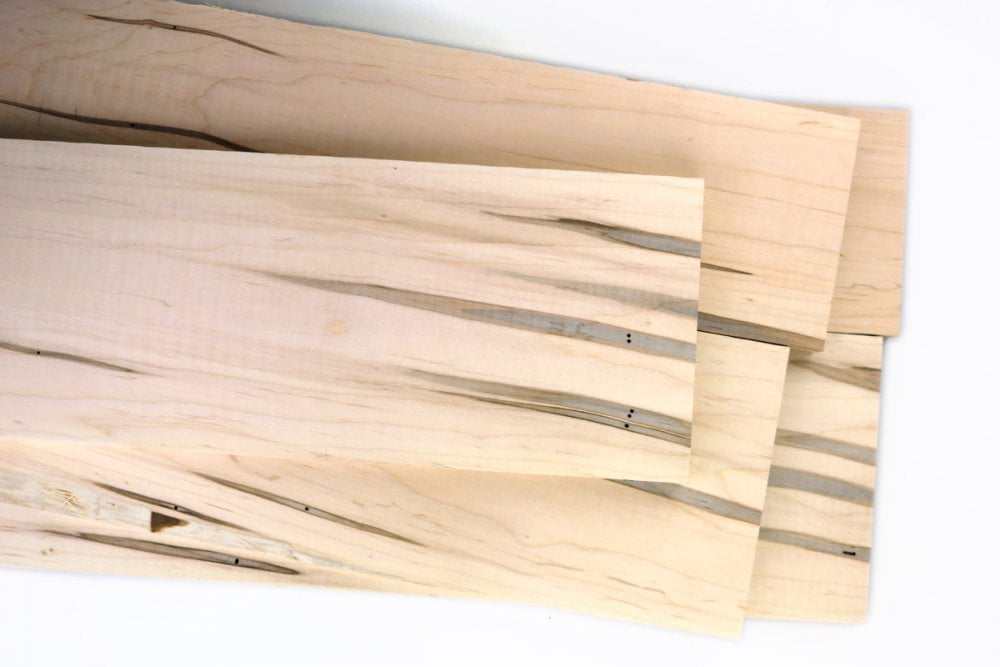Find Your Perfect Wood Product
If you find a product you like, reach out to us for more details and assistance.
Ambrosia Maple
This wood charms you with the way it captures the essence of nature at work. Ambrosia maple is a type that’s displays a patchwork pattern of stunning gray streaks infused with maple’s usual clear white color and plain grain. It’s an astonishing effect provided by beetles and the wood gives you a whole new outlet of creativity.
Length: Not specified
Thickness: 4/4
- Common Name(s): Ambrosia Maple
- Scientific Name: Acer spp.
- Distribution: Northeastern North America
- Tree Size: 80-115 ft (25-35 m) tall, 2-3 ft (0.6-1.0 m) trunk diameter
- Average Dried Weight: 44.0 lbs/ft³ (705 kg/m³)
- Janka Hardness: 1,450 lbf (6,450 N)
- Crushing Strength: 7,830 lbf/in² (54.0 MPa)
Heartwood: Light to medium brown, sometimes with a reddish hue.
Sapwood: Pale to nearly white, often with darker streaks caused by the ambrosia beetle.
Grain: Generally straight but can also be curly or wavy.
Texture: Fine, even texture with moderate natural luster.
Rated as non-durable to perishable in regard to decay resistance. Susceptible to insect attack.
Fairly easy to work with both hand and machine tools, though somewhat difficult compared to other maples due to the presence of ambrosia beetle marks. Turns, glues, and finishes well, though it can produce blotchy results when staining; using a pre-conditioner, gel stain, or toner may be necessary to get an even color.
- Furniture
- Veneer
- Musical instruments
- Cutting boards
- Specialty wood items
- Decorative pieces






Ambrosia Maple is highly prized for its unique and decorative appearance, caused by the ambrosia beetle’s tracks in the wood. The beetle’s activity results in distinctive discoloration and streaks, which give each piece a one-of-a-kind appearance.
Note: Ambrosia Maple is not a distinct species but rather a description of any type of maple that has been infested by the ambrosia beetle, resulting in its characteristic markings.